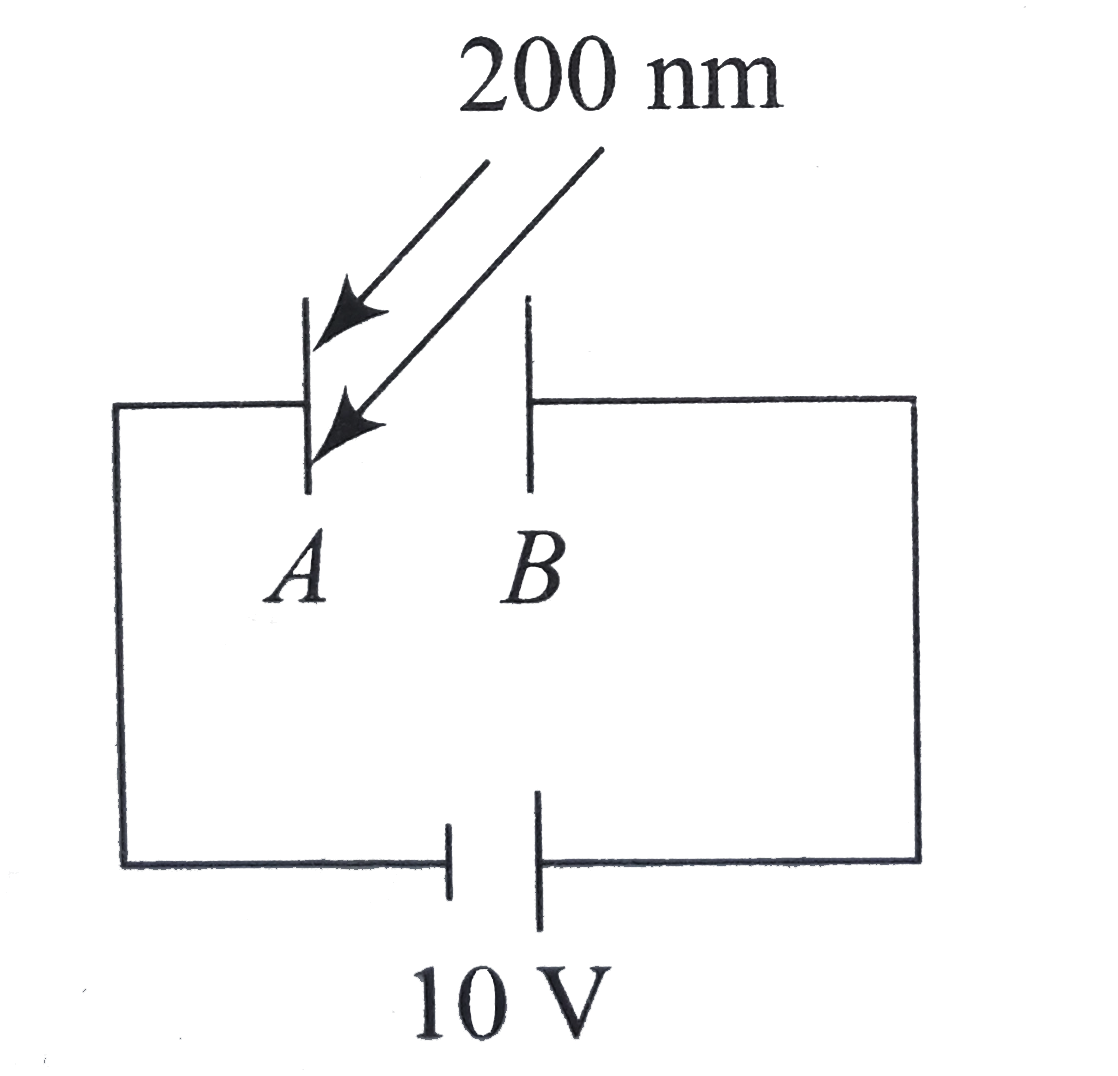A beam of electron accelerated by a large potential difference V is mode of strike a metal target of produce X-ray . For which of the following value of V , will the resulting X-ray have the lower minimum wavelength?
10 kV
20 kV
30 kV
40 kV
The correct Answer is:D
To solve the problem, we need to determine the relationship between the accelerating potential difference V and the minimum wavelength λ of the X-rays produced when electrons strike a metal target.
1. Understanding the Relationship:
The minimum wavelength λmin of the X-rays produced by the electrons can be expressed using the formula:
λmin=hceV
where:
- h is Planck's constant,
- c is the speed of light,
- e is the charge of an electron,
- V is the accelerating potential difference.
2. Identifying the Proportionality:
From the formula, we can see that λmin is inversely proportional to V:
λmin∝1V
This means that as V increases, λmin decreases.
3. Finding the Maximum Potential:
To achieve the lower minimum wavelength, we need to maximize the value of V. Among the given options:
- 10 kilovolt
- 20 kilovolt
- 30 kilovolt
- 40 kilovolt
The highest potential is 40 kilovolt.
4. Conclusion:
Therefore, to produce X-rays with the lower minimum wavelength, the value of V should be 40 kilovolt.
Final Answer:
The resulting X-ray will have the lower minimum wavelength for V=40 kilovolt.
---
The minimum wavelength λmin of the X-rays produced by the electrons can be expressed using the formula:
λmin=hceV
where:
- h is Planck's constant,
- c is the speed of light,
- e is the charge of an electron,
- V is the accelerating potential difference.
From the formula, we can see that λmin is inversely proportional to V:
λmin∝1V
This means that as V increases, λmin decreases.
To achieve the lower minimum wavelength, we need to maximize the value of V. Among the given options:
- 10 kilovolt
- 20 kilovolt
- 30 kilovolt
- 40 kilovolt
Therefore, to produce X-rays with the lower minimum wavelength, the value of V should be 40 kilovolt.
The resulting X-ray will have the lower minimum wavelength for V=40 kilovolt.
Topper's Solved these Questions
Similar Questions
A beam of electron accelerated by a large potential difference V is mode of strike a metal target of produce X-ray . For what value of V , will the resulting X-ray have the lower minimum wavelength?
View SolutionWhich of the following wavelength falls in X - ray region
View SolutionAn electron is accelerated by a potential difference of 25 V. Find the de Broglie wavelength associated with it.
View SolutionAn electron is accelerated by a potential difference of 50 V. Find the de Broglie wavelength associated with it.
View SolutionAn electron beam is acceleration by a potential difference V to hit a metallic target to produce X-rays. It produces continuous as well as characteristic X-rays. If λmin is the smallest possible wavelength of X-rays in the spectrum, the variation of logλmin with logv is correctly represented in
View Solutionde Broglie wavelength of an electron after being accelerated by a potential difference of V volt from rest is :
View SolutionAn electron is accelerated by a potential difference of 9.375 V . Find the de-Broglie wavelength associated with it is Å
View SolutionAn electron is accelerated through a potential difference of V volit .Find th e de Broglie wavelength associated with electron.
View SolutionThe wavelength associated with an electron accelerated through a potential difference of 100V is nearly
View Solution
In Fig. electromagnetic radiations of wavelength 200nm are incident on a metallic plate A. the photoelectrons are accelerated by a potential difference of 10 V. These electrons strike another metal plate B from which electromagnetic radiations are emitted. The minimum wavelength of emitted photons is 100nm. If the work function of metal A is found to be (×x10−1)ev, then find the value of x. (Given hc=1240eV nm)
View Solution
